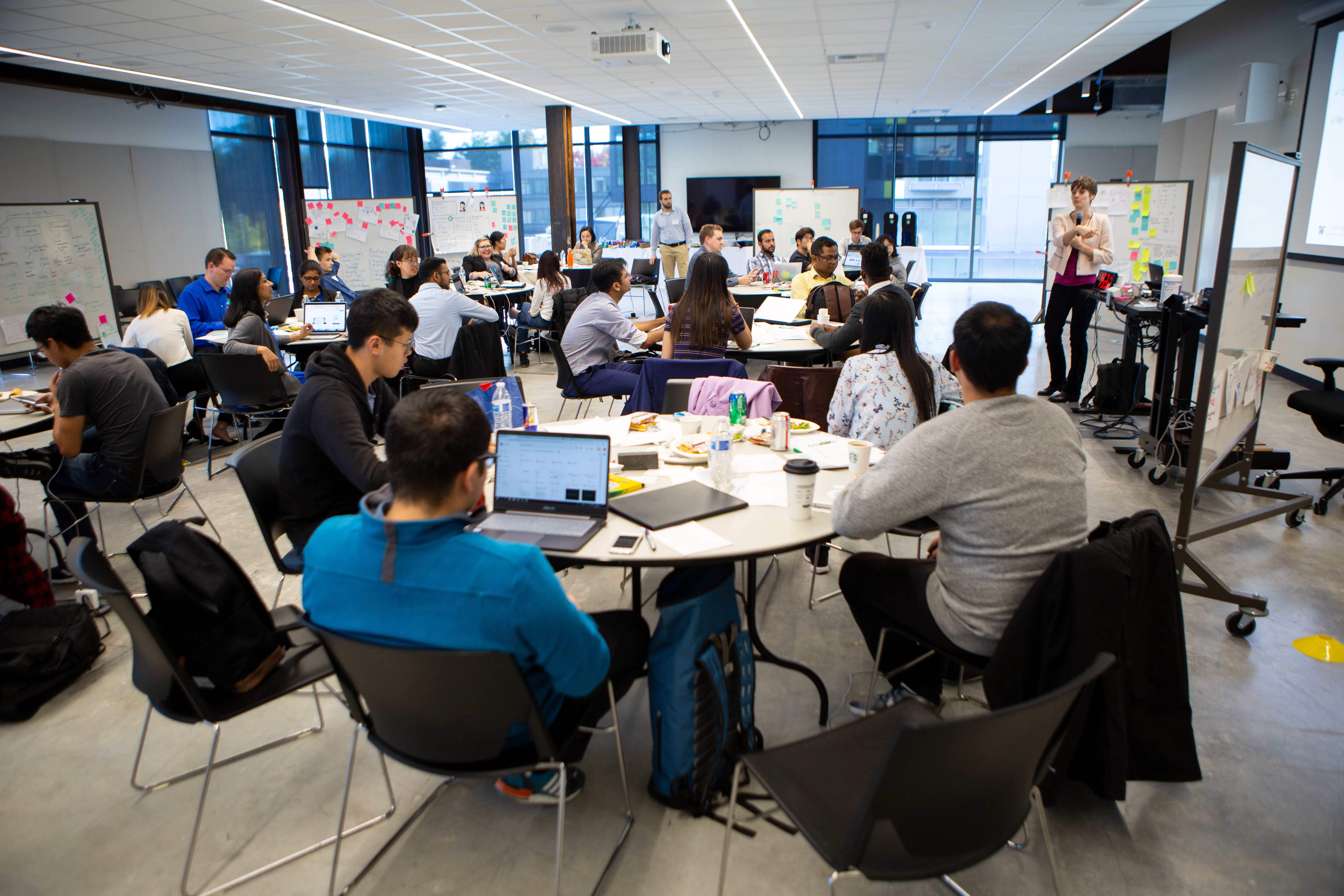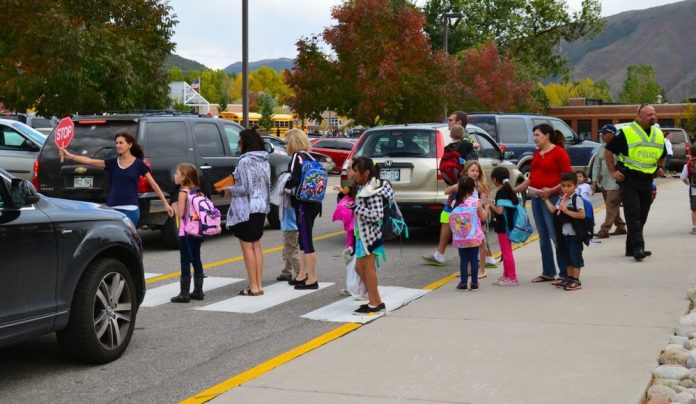To create more equitable outcomes, the needs of parents with school-age children must be better addressed in future transportation solutions.
At 8am any given school day in King County, the cars snake around the elementary school, inching toward the drop off zone. The traffic spills out into the surrounding streets, clogging intersections and creating tense moments for drivers forced to make snap decisions between speed and safety.
Horns blare. Tempers rise. Collisions happen. And, insidiously, hours are lost to sitting in congestion.
According to National Highway Traffic Administration data collection on school transportation crashes, between 2007 and 2016:
- 1,282 people of all ages killed in school- transportation-related crashes.
- 281 of victims were school age children.
- Only 58 of victims were occupants of school transportation vehicles, while 116 were occupants of other vehicles, 98 were pedestrians, 8 were cyclists, and 1 was another nonoccupant.
- More school-age pedestrians were killed from 6am to 7am and from 3pm to 4pm than any other hours of the day.
- Less than two-thirds (62%) of the school-age pedestrians fatally injured in school-transportation-related crashes were struck by school buses or vehicles functioning as school buses.
These statistics reveal the dangers created by car traffic in school zones. While safety is the biggest concern, the congestion caused by car-based school commutes is also alarming in both its impacts on families and our transportation system at-large.
Roughly 50 percent of American parents drive their children to school. A recent Google consumer survey found 44% of parents spent five hours or more driving their kids to school and activities each week, while private ride service company HopSkipDrive reported that of 1,000 parents polled 51% spent five hours or more driving their kids, and more than 1 in 10 spent 10 hours or more, the equivalent of a part-time job.

Car-Based School Commutes Strain Transportation Systems
The negative impact of these transportation patterns is substantial. According to the Safe Routes to School National Partnership, in US metro areas up to 20 or 30 percent of morning traffic is generated by parents driving their children to school.
Most parents cite convenience as the primary factor for why they drive their children to school. In the Seattle metro area, it is well-known that the transit systems work best when riders have a single destination. Increasing the number of destinations makes it difficult to manage trips because so many routes are disconnected. For working families with children, particularly those outside of urban cores, this means driving is often not the preferred option, but the only option.
A review of transit ridership numbers across the US reveals that families with children are among the lowest user groups. In fact, according to the American Public Transportation Association’s 2017 statistics, 79% of transit riders were between the ages of 25 and 54, and 57% of transit riders came from households of only one or two people.
This data has important equity based implications. Systems that force parents to spend hours each week driving their kids have real consequences on families, draining of them of both time and financial resources. They also worsen the burden of car traffic on the greater society and environment.
As the Seattle metro area approaches the period of maximum of constraint, a.k.a. Seattle’s new transportation normal, families with children will be amongst the most affected by increases in congestion, the effects of which will resonate far outside of the downtown core.
UW Ideathon Winners Tackle the Problem of School Commutes

Solving our transportation issues requires creative thinking. Recognizing the need for new approaches and diverse perspectives, UW Mobility Innovation Center Imagine Mobility Ideathon, sponsored in partnership with WSDOT, SDOT, Sound Transit and King County Metro, challenged teams of undergraduate and graduate students from diverse disciplines to tackle the Seattle metro area’s transportation challenges from a user perspective.
As part of the process, teams conducted field work, going out into the community and interviewing people about their transportation needs and concerns. From that data, they assembled a “model user” for whom they created a unique transportation solution.
For the first-place winning team, the “model user” was an Everett mom with school age kids who works in Seattle and spends 45-50 minutes commuting each way between home, school, and work everyday.
The team’s goal was to craft a solution that would get the model user out of her car and into public transit or a ride share. Their solution? Creating “mobility hubs” at public schools.
School mobility hubs would offer additional transportation options for parents by creating routes into central locations and major employers that could be served by vanpools, city buses, ride share companies, company shuttles, or private cars depending on the locations and size of the schools.
In the students’ vision, the mobility hubs would also include a community center, most likely a cafeteria, that would increase communication and connection-building opportunities among commuters, who would not be limited to parents of children enrolled in the school. Anyone who wished to participate in the mobility hub services and programs would be able to.
The team was encouraged by the competition judges to work toward making their idea a reality. As a result of winning they have received automatic admission into National Science Foundation (NSF) I-Corps Customer Discovery Program. As grantees, the team will receive $2,500 to develop their the school mobility hub concept and interview potential customers. Their training will also include individual advising on team strategies and feedback from seasoned entrepreneurs.
The school mobility hub concept could be seen as building on an existing King County program. Through its SchoolPool program, King County Metro encourages families share school commutes, whether it be by car, foot, transit, or ride share. The program is open to students who attend any public or private elementary, middle, or high school. It also attempts to motivate young users to avoid single passenger car travel by allowing them to track their miles, cost savings, and CO2 reductions based on their commute habits.
Ride Share Companies Offer Parents Who Can Pay Increased Options
For those who can afford it, private ride share companies that specialize in transporting kids are sprouting up in affluent metro areas like San Francisco and Seattle. HopSkipDrive, GoKart, Zum, and Kango all offer services that fall somewhere between taxi and nanny. While company policies vary, as a rule “care drivers” pass rigorous screening. But costs are very high. For example, at HopSkipDrive the minimum drive cost is $16.
These services do not necessarily decrease congestion either. While companies like HopSkipDrive do have carpool options, which allow families and schools to arrange shared rides, many parents opt for solo trips for their kids.
In general, families whose children walk to school tend to be lower income, so increasing carpooling among affluent families could help decrease the the congestion by reducing the number of single-car trips; however, at best it offers a partial solution to what amounts to a major transportation problem, while also doing little to address the issues of equity that confront middle and low-income families.
If you are interested in helping to make school commutes safer for kids in Seattle, the City of Seattle School Traffic Safety Committee is actively seeking new members. Learn more here.
Natalie Bicknell Argerious (she/her) is a reporter and podcast host at The Urbanist. She previously served as managing editor. A passionate urban explorer since childhood, she loves learning how to make cities more inclusive, vibrant, and environmentally resilient. You can often find her wandering around Seattle's Central District and Capitol Hill with her dogs and cat. Email her at natalie [at] theurbanist [dot] org.


